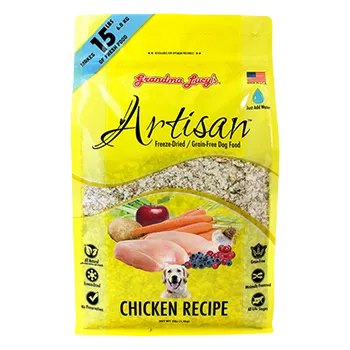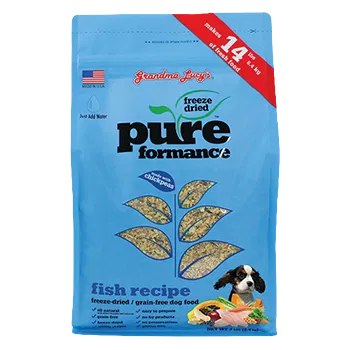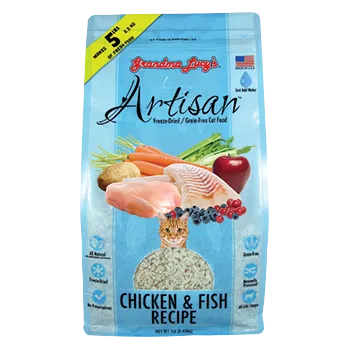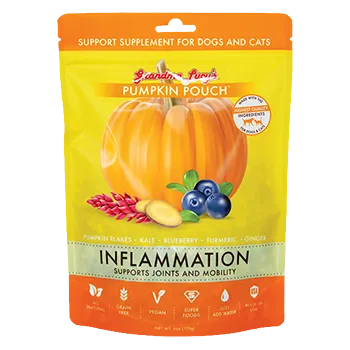The springtime showers and beautiful blooming flowers that this time of year bring are often accompanied by seasonal allergies for both humans and pets. Just as they are for people, allergies in pets are an exaggerated immune response to something in the environment, such as pollen, grass, mold, dust, and flea bites.
Does my dog have seasonal allergies or food allergies?
When it comes to allergies, pet parents often automatically assume that they are due to a sensitivity to something in their diet. However, food allergies account for only 10% of the allergies a pet can experience. The best way to determine if your furry friend’s allergies are caused by food is to use an elimination trial, which entails having them follow a limited-ingredient diet for 8-12 weeks to see if their symptoms improve. Consult your veterinarian for guidance on following this kind of diet.
If your pet is still experiencing symptoms associated with allergies even after you eliminate certain food factors, their allergies could be attributed to the environment. If you notice that your dog suffers from itching and scratching during a particular time of year—especially in the spring—they may be suffering from seasonal allergies.
 Symptoms of Seasonal Allergies in Pets
Symptoms of Seasonal Allergies in Pets
If your pet has seasonal allergies, you may notice the following symptoms:
-
Itchy skin that flakes
-
Ear infections
-
Stinky ears
-
Hair loss or bald patches
-
Head shaking and scratching of the ears
-
Excessive licking and biting of the paws
-
Hives
-
Face rubbing
-
Sneezing
-
Scratching
-
Eye discharge
-
Respiratory problems
The symptoms listed above can also be a sign of a food allergy—the main difference is that a seasonal allergy will come and go with the season.
How Can I Treat My Dog’s Allergies?
A strict grooming routine is a great way of helping minimize the symptoms of allergies. Regularly bathing your pet to make sure that any grass or pollen is washed off their bodies is important. Since too much bathing can lead to dry skin, you can also give your pet paw soaks after being outside. This will help minimize the amount of allergens that are brought indoors.
Some vets will also recommend antihistamines to help. It is best to get your vet's opinion for proper dosage. In extreme situations, steroids can be administered, but are often a last resort due to the possible side effects.
 Dietary Solutions for Seasonal Allergy Relief for Pets
Dietary Solutions for Seasonal Allergy Relief for Pets
When it comes to managing your dog’s allergies, nature offers a wide range of powerful, nutrient-packed ingredients that can help soothe symptoms and support overall health. Many superfoods contain natural antihistamines, anti-inflammatories, and immune-boosting properties that make them excellent additions to your pup’s diet.
Quercetin
Quercetin is a powerful plant-based compound found in a variety of fruits and vegetables, known for its natural anti-inflammatory and antihistamine properties. It can help your pet’s body respond to allergens more effectively—without the need for medication. Some sources of quercetin you can safely share with your dog include apples, blueberries, and cranberries. Serve them raw for a fresh treat, or try Grandma Lucy’s Pumpkin Pouch recipes—superfood toppers packed with these allergy-fighting fruits for an easy mealtime boost.
Broccoli and kale are also loaded with quercetin, and when lightly steamed, they make a nutritious addition to your pup’s dinner bowl. For a simple, mess-free option, check out Grandma Lucy’s Top It supplements. These toppers are enriched with probiotics and supercharged with nutrient-dense veggies like broccoli and kale. Just sprinkle them over your dog’s food for a tasty, health-boosting way to help manage allergies at mealtime.
 Vitamin C
Vitamin C
Vitamin C is another effective natural remedy for seasonal allergies in pets. Not only does it support the immune system, but it also works as a natural antihistamine—helping your pup better manage allergic reactions. This essential vitamin is found in nutrient-rich ingredients like leafy greens, broccoli, and blueberries. Want an easy way to incorporate these into your dog’s diet? Try Grandma Lucy’s Macanna recipes, which are loaded with healthy proteins and superfoods like kale and blueberries. It’s a simple, tasty way to give your pet an allergy-friendly boost at mealtime.
Omega-3 Fatty Acids
Omega-3 fatty acids are another great natural treatment for allergies in pets, helping to reduce inflammation, soothe itching, and promote healthier skin and coats. Dog-safe whole foods like kale, flaxseed, and sunflowers are rich sources of these essential fatty acids and can be easily added to your pup’s diet. Grandma Lucy’s Artisan, Pureformance, and 3 Bears recipes are all made with flaxseed, making it easy to give your pet a delicious, omega-3-packed meal that supports allergy relief from the inside out.

Conclusion
Environmental allergies can be managed with the right approach and a little extra care. Minimizing your pet’s exposure to common allergens, supporting their immune system with natural remedies, and incorporating allergy-fighting superfoods into their diet can make a big difference. If your pet continues to show symptoms even after ruling out food sensitivities, it might be time to have a conversation with your vet about potential environmental triggers. With a thoughtful plan, your furry friend can feel their best all year long
About the Author:






















